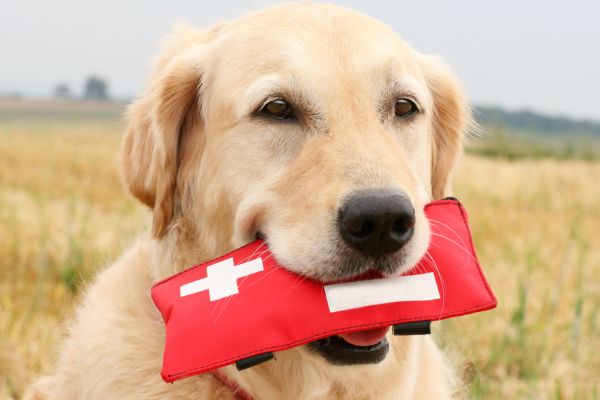When our beloved pets are injured, it can be a terrifying experience. Their inability to speak or explain what they’re feeling only adds to our anxiety. Whether it’s a minor cut, a broken limb, or an unexpected accident, knowing the basics of first aid for pet injuries can make a life-saving difference. Preparedness, calmness, and quick action can protect your furry companion until professional help is available.
Understanding the Importance of Pet First Aid
Many pet owners underestimate how vital it is to be familiar with first aid for pet injuries. Emergencies don’t announce themselves. A leisurely walk could suddenly turn into chaos if your dog steps on broken glass, or a playful afternoon might result in your cat getting caught in something sharp. Recognizing symptoms and applying immediate care can prevent further harm and reduce long-term consequences.
Learning first aid also builds your confidence as a responsible pet parent. It transforms fear into action and gives your pet the best possible chance of recovery. While professional veterinary care is always recommended, your intervention in those crucial early moments can truly save a life.
Common Pet Injuries That Require Immediate Attention
Pets, much like children, are curious by nature. This curiosity sometimes leads them into dangerous situations. From minor abrasions to more serious injuries such as fractures, burns, or ingestion of toxic substances, each scenario requires a different approach. But what remains constant is the need for calm and prompt care.
For instance, if your pet has been in a fight with another animal, there might be hidden puncture wounds beneath the fur. These wounds can become infected quickly if not cleaned and treated. Similarly, limping or favoring a limb may suggest a sprain or even a broken bone. Ingesting a harmful household substance like chocolate, antifreeze, or certain plants demands swift action to avoid irreversible damage.
Immediate Steps to Take When Your Pet Is Injured
When faced with a pet emergency, your first step should always be to ensure your own safety. A scared or hurt animal might bite or scratch, even if they normally wouldn’t. Approach them gently, speak softly, and if possible, muzzle your dog or wrap your cat in a towel to avoid further injury.
Once it’s safe to examine your pet, look for visible signs of injury such as bleeding, swelling, or limping. If there’s bleeding, applying pressure with a clean cloth can help control it until you get veterinary assistance. In the case of burns, rinse the area with cool water and avoid using ointments not intended for animals. For broken bones, keep the pet still and avoid manipulating the limb. Supporting it with a towel or cloth until a vet can assess the damage is ideal.
When your pet is choking, it’s critical to act fast. Check inside their mouth if it’s safe to do so and attempt to remove any obstruction gently. If that fails, applying sharp, controlled pressure just below the rib cage may help dislodge the object. This method, similar to the Heimlich maneuver, should only be used when the airway is clearly blocked.
How to Prepare a Pet First Aid Kit
One of the most practical things any pet owner can do is keep a first aid kit specifically tailored for pets. While this article isn’t about listing items, it’s worth emphasizing that having essentials like antiseptic solutions, gauze, scissors, and contact numbers for local emergency vets can be incredibly helpful. Equally important is knowing how to use each item correctly.
Store the kit in a place that’s easy to access, but out of reach of pets and children. Check it regularly to ensure items haven’t expired or been used up. Include any specific medications your pet might need, especially if they have ongoing health issues.
When to Call the Veterinarian
Even if you feel confident administering first aid for pet injuries, it’s crucial to know when professional help is necessary. Any injury involving the eyes, significant blood loss, difficulty breathing, unconsciousness, or signs of poisoning should prompt an immediate visit to the vet.
There are times when an injury may not appear serious but can worsen rapidly. Internal bleeding, for example, might not show external signs until it’s too late. Lethargy, pale gums, or rapid breathing following an accident are red flags that must never be ignored.
Veterinarians are trained to handle complex injuries and have access to diagnostics like x-rays, blood tests, and surgical tools. While first aid can stabilize your pet, only a veterinarian can provide the full scope of care required to ensure complete healing.
Training Yourself in Pet First Aid
Being knowledgeable about first aid for pet injuries isn’t something that happens overnight. Fortunately, many organizations offer certified courses, both online and in person. These courses cover various scenarios, from CPR to wound management, and empower pet owners to act quickly and correctly.
Practicing these techniques in a non-emergency setting helps you stay composed when real situations arise. Just as you’d learn CPR or basic first aid for humans, learning the equivalent for your pet shows dedication to their safety and well-being.
Creating a Safe Environment to Prevent Injuries
While accidents are often unpredictable, many injuries can be prevented by creating a pet-safe environment. Make your home pet-proof by keeping hazardous materials locked away, avoiding small objects that could be swallowed, and supervising outdoor play. If you live in a high-rise building, install secure window screens to prevent falls.
Investing in proper training also minimizes risk. A well-trained dog is less likely to run into traffic or get into altercations with other animals. For cats, ensuring they stay within safe boundaries, especially if they are indoor-outdoor, greatly reduces the chance of trauma.
Regular vet checkups further help identify underlying conditions that might make your pet more prone to injury. Conditions like arthritis or heart disease can affect their mobility and stamina, increasing the risk of accidents.
Conclusion: Be Prepared, Stay Calm, Save a Life
Pet emergencies can happen in the blink of an eye, and how you respond in those first moments can make all the difference. Knowing the basics of first aid for pet injuries equips you with the tools and confidence to act swiftly, protect your furry friend, and prevent further harm.
From stabilizing wounds to recognizing the signs of serious conditions, your preparedness is an expression of love and responsibility. While professional veterinary care is irreplaceable, your actions in the immediate aftermath can bridge the critical gap between injury and recovery.
Ultimately, your goal as a pet owner is not only to enjoy the unconditional love and joy your companion provides but also to safeguard their health and happiness at every turn. By mastering first aid for pet injuries, you’re taking a vital step toward fulfilling that promise.



